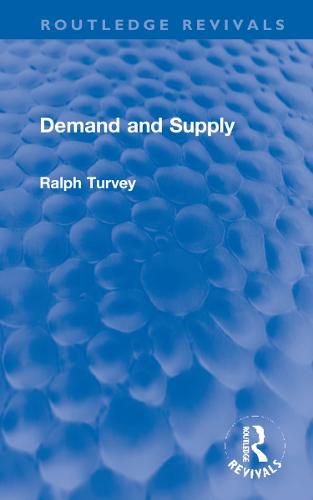Readings Newsletter
Become a Readings Member to make your shopping experience even easier.
Sign in or sign up for free!
You’re not far away from qualifying for FREE standard shipping within Australia
You’ve qualified for FREE standard shipping within Australia
The cart is loading…






First published in 1971, Demand and Supply is an introduction to the economics of resource allocation, often known as micro-economics. Ralph Turvey examines how the economy really works and does not just give the economists’ textbook version, which oversimplifies technology and exaggerates the importance of prices in adjusting supply and demand. Instead of offering theoretical diagrams and imaginary examples, he refrains from expounding those ideas that cannot be simply demonstrated or applied. But he includes sections on retail margins, urban land values, and the value of time - topics rarely dealt with in beginner’s books. Some examples of the examples are: university teachers’ pay; cotton spinning costs; pricing of tin cans; demand for farm tractors; newspaper economics; competition in the bus industry. This is the kind of economics used in practice and rests on down to earth fact finding. This book will be useful for both general readers and A- level and first year university students.
$9.00 standard shipping within Australia
FREE standard shipping within Australia for orders over $100.00
Express & International shipping calculated at checkout
First published in 1971, Demand and Supply is an introduction to the economics of resource allocation, often known as micro-economics. Ralph Turvey examines how the economy really works and does not just give the economists’ textbook version, which oversimplifies technology and exaggerates the importance of prices in adjusting supply and demand. Instead of offering theoretical diagrams and imaginary examples, he refrains from expounding those ideas that cannot be simply demonstrated or applied. But he includes sections on retail margins, urban land values, and the value of time - topics rarely dealt with in beginner’s books. Some examples of the examples are: university teachers’ pay; cotton spinning costs; pricing of tin cans; demand for farm tractors; newspaper economics; competition in the bus industry. This is the kind of economics used in practice and rests on down to earth fact finding. This book will be useful for both general readers and A- level and first year university students.